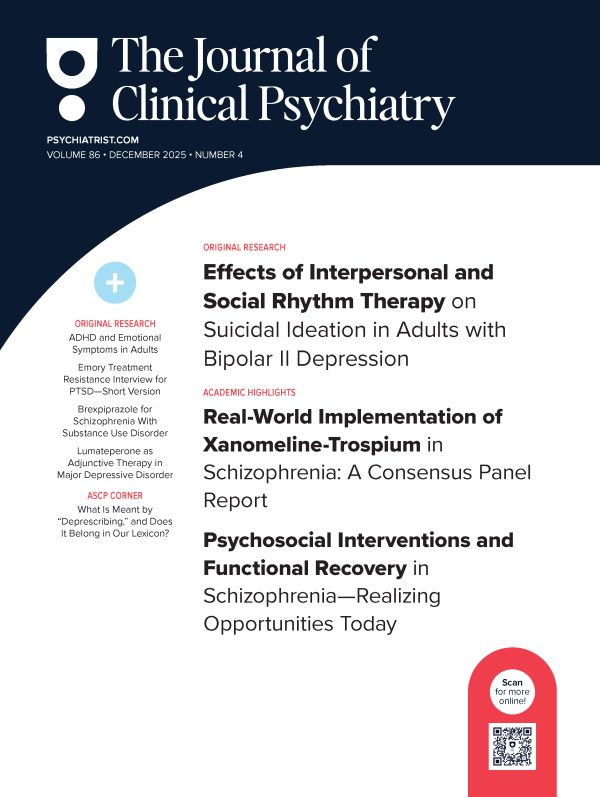Background: We examined the presence of command auditory hallucinations for suicide (CAHS) in a sample of individuals with schizophrenia or schizoaffective disorder. We examined the relationship between CAHS and demographic and clinical variables. We also investigated the relationship between CAHS and suicide attempts.
Method: 100 individuals with DSM-IV schizophrenia or schizoaffective disorder hospitalized on an inpatient research unit participated. Information was gathered using the Diagnostic Interview for Genetic Studies and the Harkavy Asnis Suicide Scale. Data were gathered from 1995 to 2001.
Results: CAHS were frequent in this sample (22%), as were suicide attempts (33%). Eight percent of the entire sample (36% of those who experienced CAHS) made at least 1 suicide attempt in response to the hallucinations. The presence of CAHS was not related to demographic or clinical measures assessed. The frequency of CAHS was not statistically different for suicide attempters (30%) and nonattempters (18%). However, 80% (8/10) of attempters with CAHS reported at least 1 attempt in response to CAHS. Three of 6 repeat attempters who made at least 1 suicide attempt in response to CAHS also made other attempts that were not in response to CAHS. The presence of CAHS was not associated with a history of depression or substance abuse/dependence.
Conclusion: The presence of CAHS does not directly predict suicide attempts. However, individuals who are already at risk for suicidal behavior (e.g., past attempters) may be at increased risk for a suicide attempt when experiencing CAHS.
Please sign in or purchase this PDF for $40.00.





